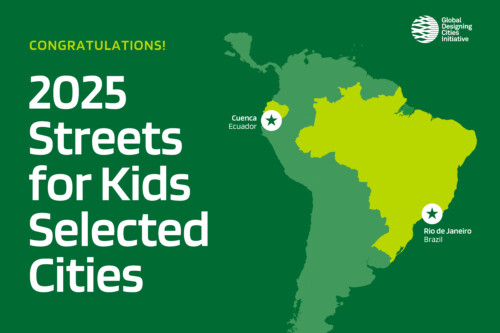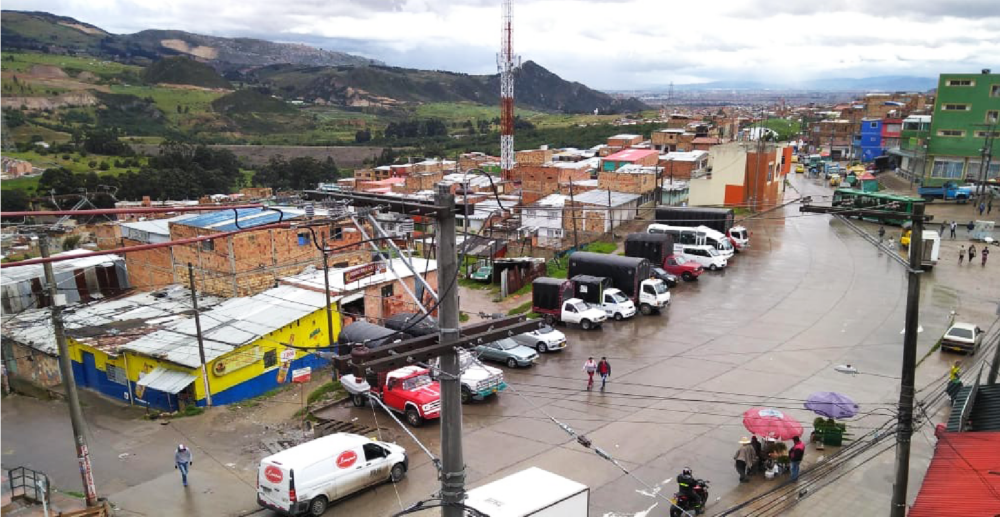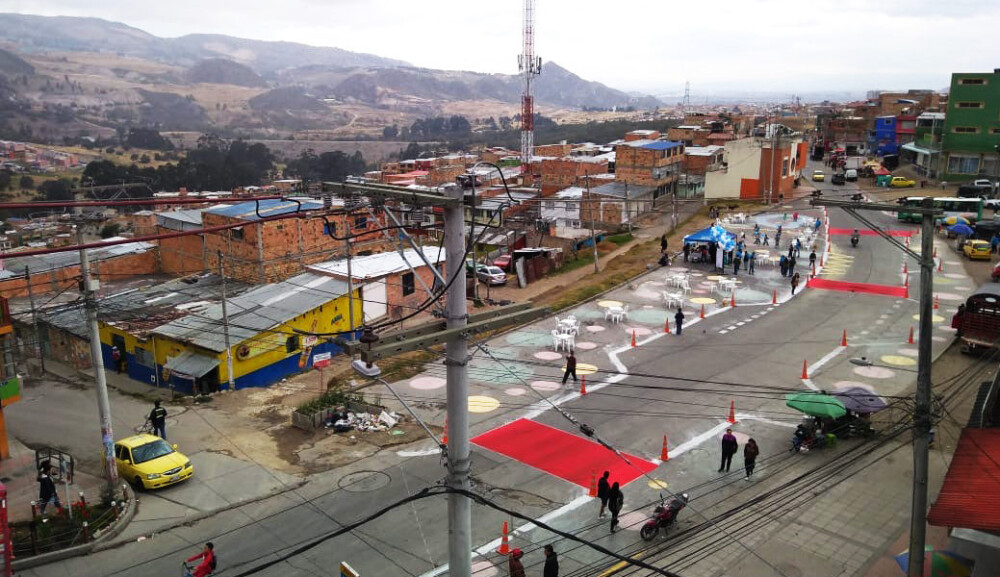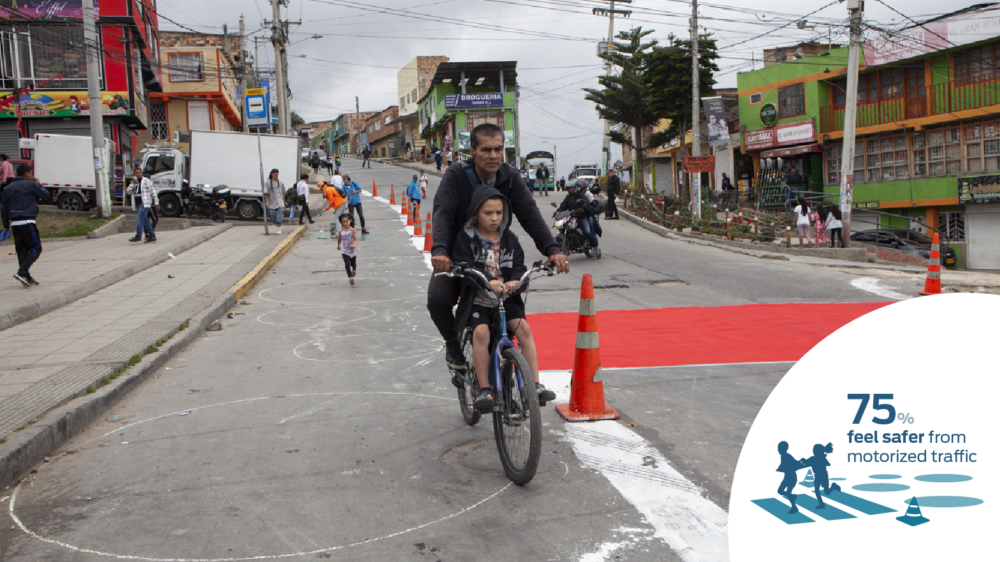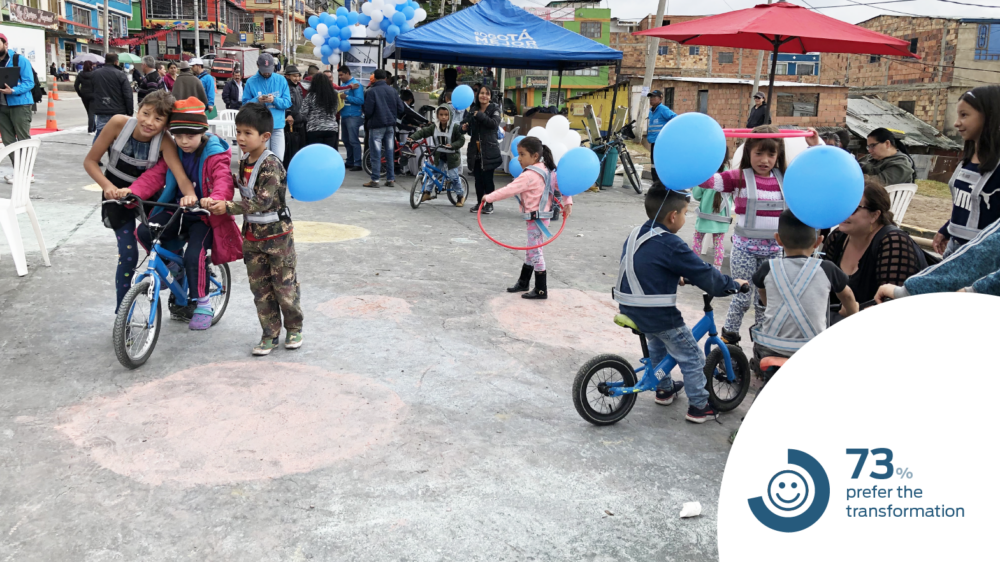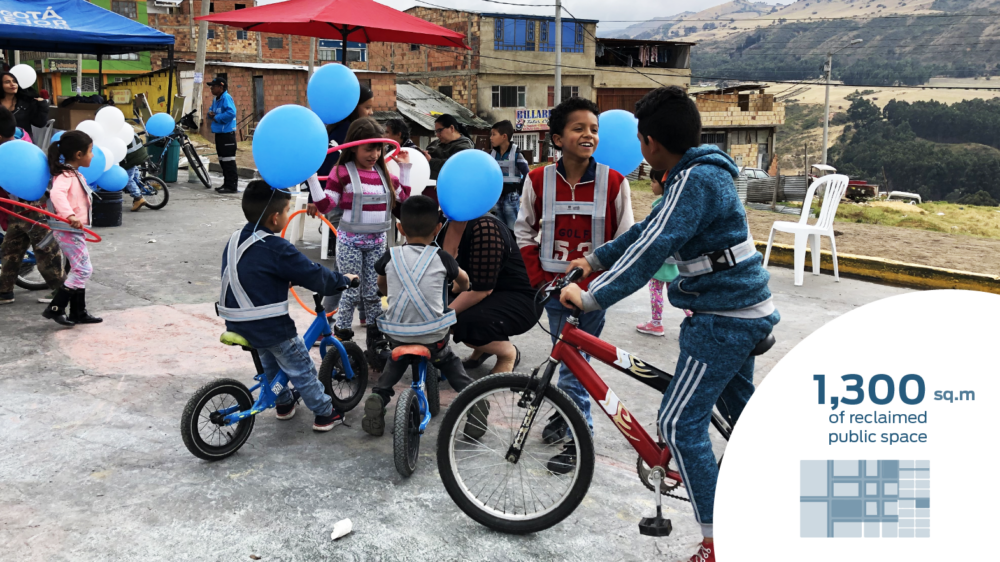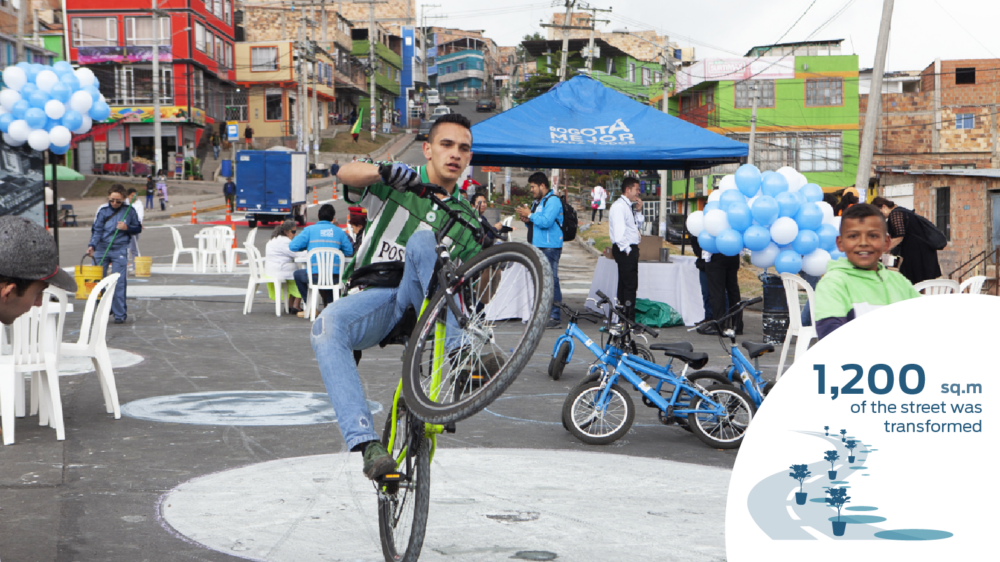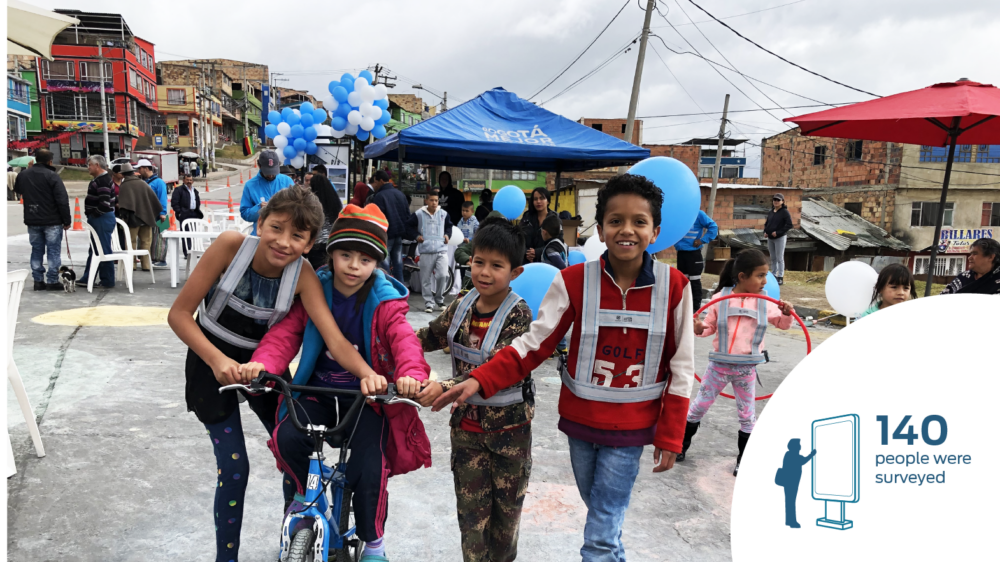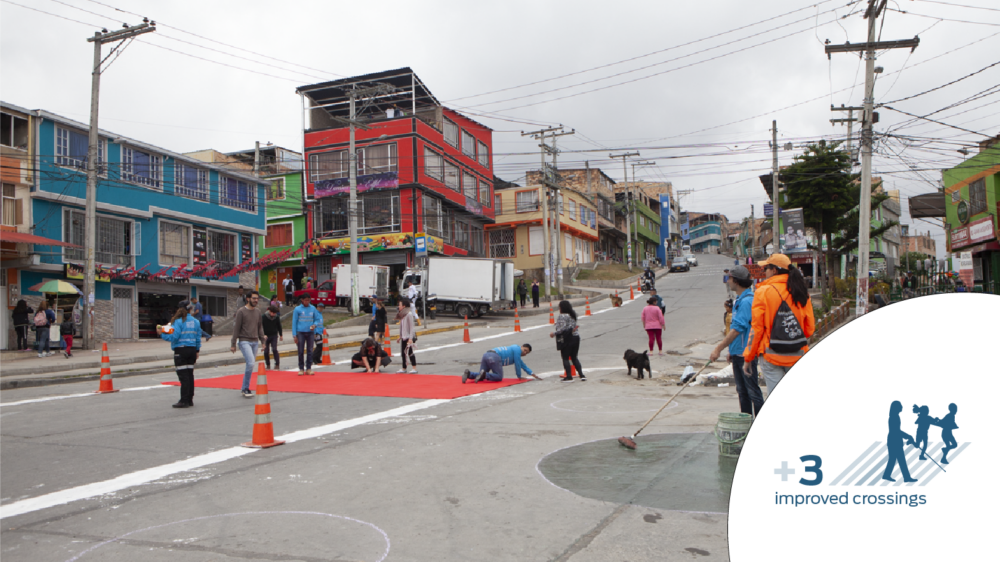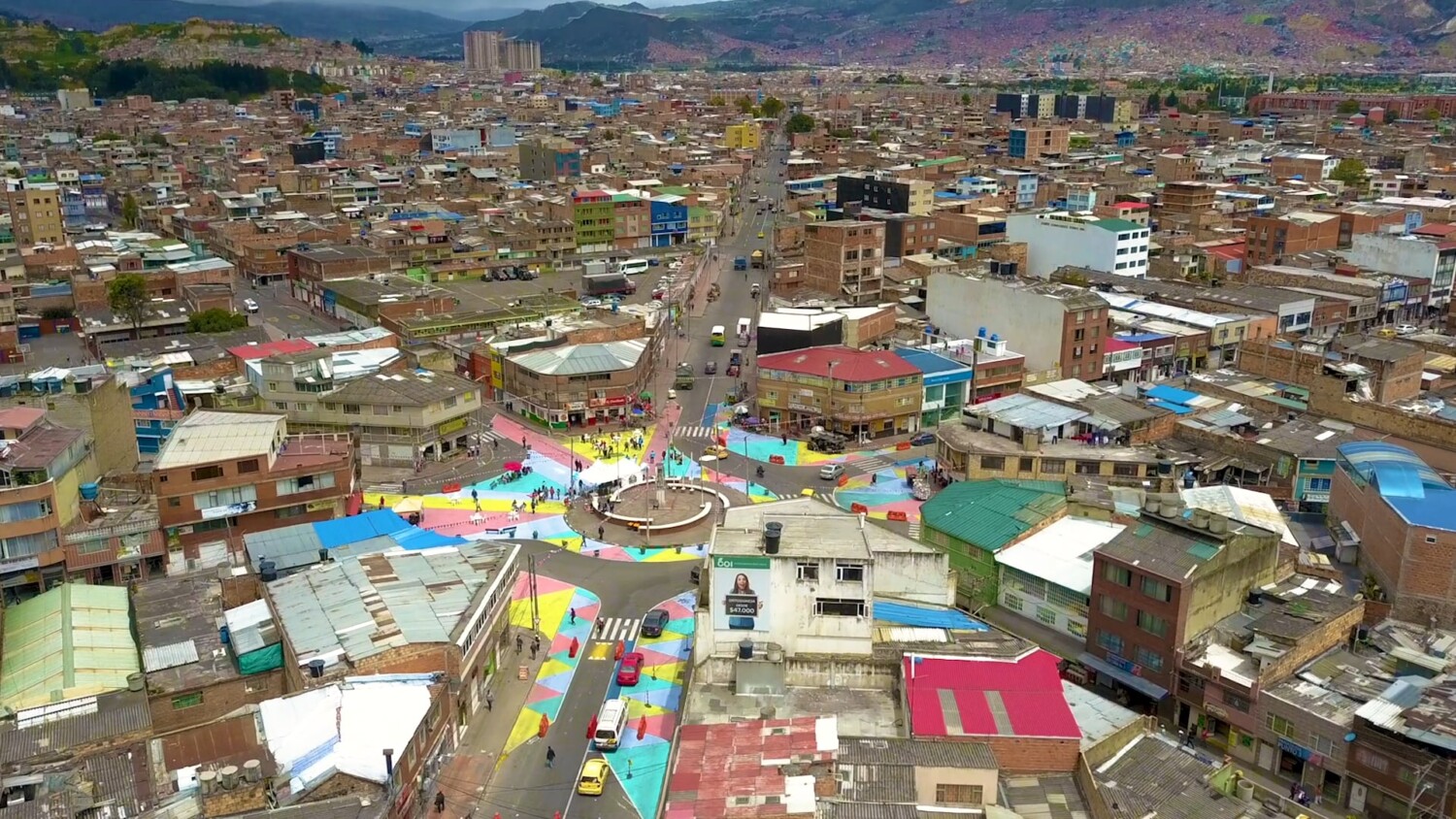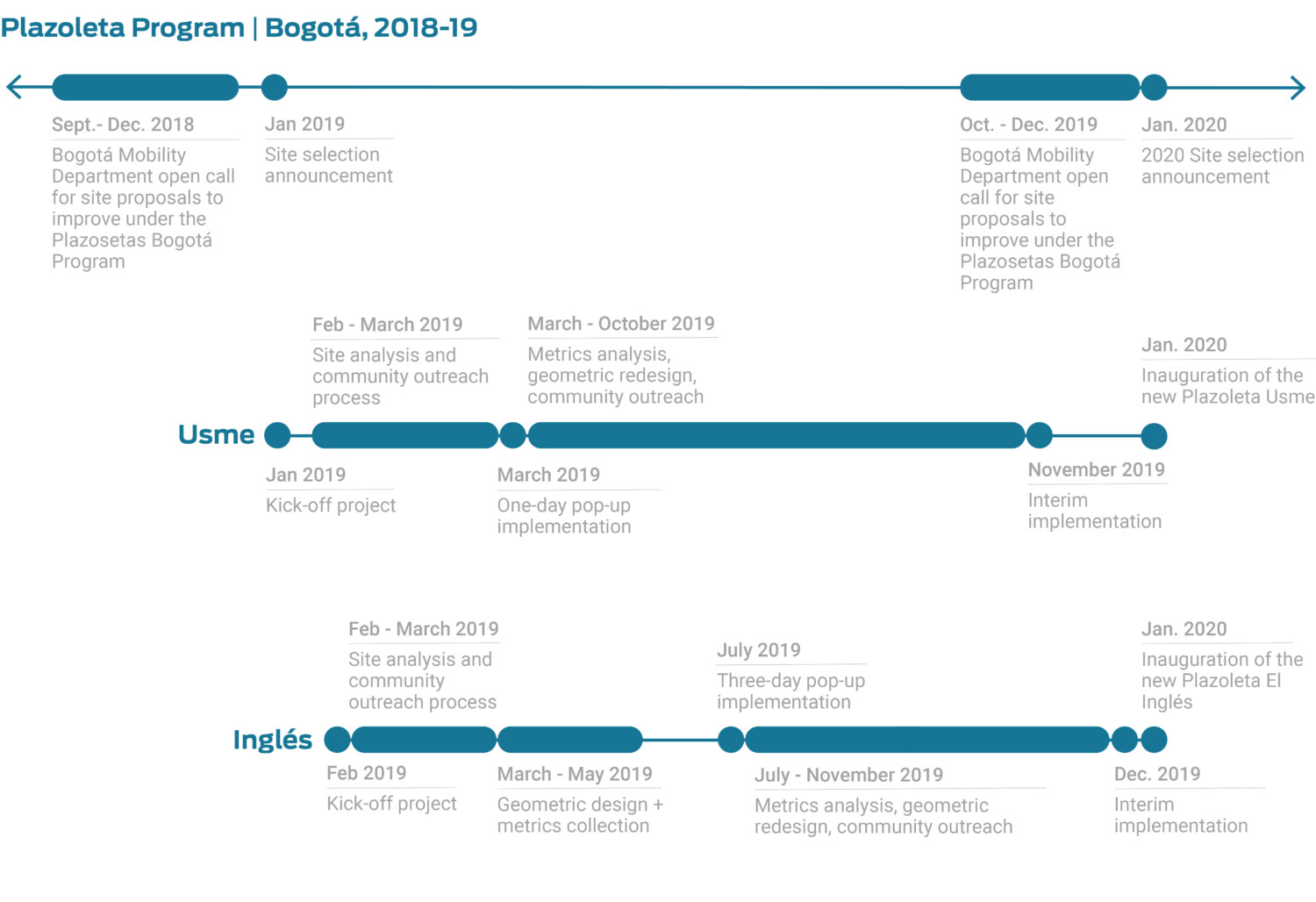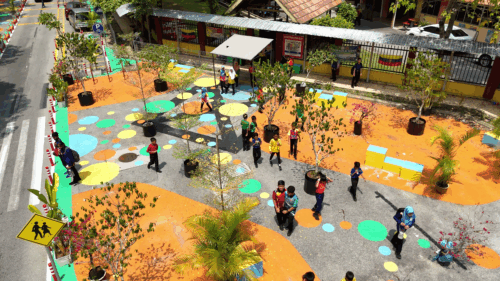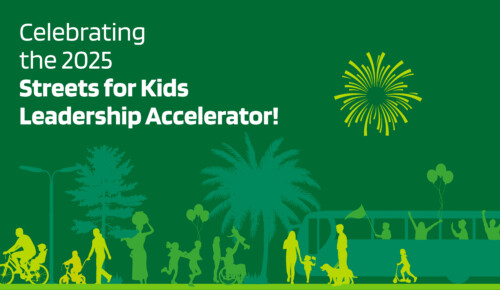The Plazoletas Bogotá Program continues to provide safer streets for people across the city. Two new interim Plazoletas are now under construction, to be inaugurated in January 2020!
Click the image above to play a video from Plazoleta Usme.
Throughout 2019, NACTO-GDCI and the Mobility Department of Bogotá, Colombia, through the Bloomberg Initiative for Global Road Safety (BIGRS), worked to give continuity to the Plazoletas Bogotá Program. Two key projects—one in the Antonio José de Sucre neighborhood of the Usme district—and another one in the El Inglés neighborhood of Rafael Uribe Uribe district, are highlighted in this article as examples of the city’s comprehensive approach to improving road safety. These two car-dominated sites were, after the request of their respective communities, redesigned to make room for people to be safe and enjoy new public spaces in the heart of their neighborhoods.
Plazoleta Usme, the first to kick-off Bogotá’s busy implementation agenda in 2019, had a pop-up event in early March. NACTO-GDCI and the Mobility Department of Bogotá implemented a pop-up plazoleta that turned over 1,300 m2 of space, formerly used for parking, into a public plaza. For one day, the area was cleared of parked cars and re-connected to the commercial strip on the other side of the street through shorter, more visible pedestrian crossings. Clearing the space also recovered the view of the mountains—an iconic feature of Bogotá—for children and their caregivers, commuters, and the community at large. The reclaimed space became a playful area, where families had fun and many kids finally had a safe space to learn to ride a bike.
The design process at Plazoleta Barrio El Inglés started shortly after that of Plazoleta Usme. This roundabout intersection is commonly used by motorists as a shortcut to connect arterial roads in the peripheries of El Inglés neighborhood. Before the interim implementation, the high volumes of large and small vehicles that moved through the space traveled at exceptionally unsafe speeds because of the lane widths and geometry of the roundabout. Between 2010 and 2018, the Bogotá Mobility Department counted 10 road traffic deaths and 123 injuries in the neighborhood, mostly comprising of pedestrians, and particularly the elderly. A three-day pop-up re-design in July 2019 tested a geometry that reclaimed space in the roadbed aroud the roundabout, and reduced the eight-legged intersection to six legs— creating diagonal areas of reclaimed space that safely connect the public space at the center of the roundabout to three of the surrounding blocks. These interventions accumulate to 2,250 m2 of new public space.
All of the Plazoletas in this program—including Usme and El Inglés—undergo thorough community engagement processes. Prior to the pop-up implementation at El Inglés, for example, the city staff facilitated seven community engagement events to hear people’s concerns. At Usme, neighbors and commuters gave their input through intercept surveys, and by writing on boards during public events. Informed by these processes, both Usme and El Inglés are now under interim construction and will be inaugurated in January 2020. These projects further the efforts of BIGRS and Bogotá to improve road safety and eliminate pedestrian fatalities.
——————–
This collaboration between NACTO’s Global Designing Cities Initiative and the City of Bogotá is made possible thanks to generous support from the Bloomberg Philanthropies Initiative for Global Road Safety (BIGRS).
Written by Lucia De La Mora
Designed by Kat Gowland
Please contact lucia@nacto.org with inquiries related to this project.
——————–
Read more about our work in Bogotá:
